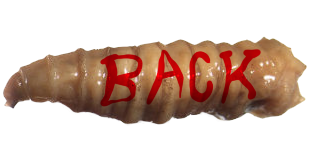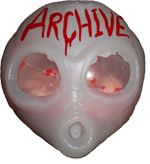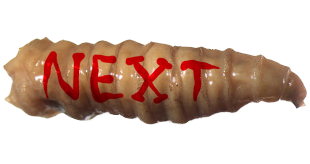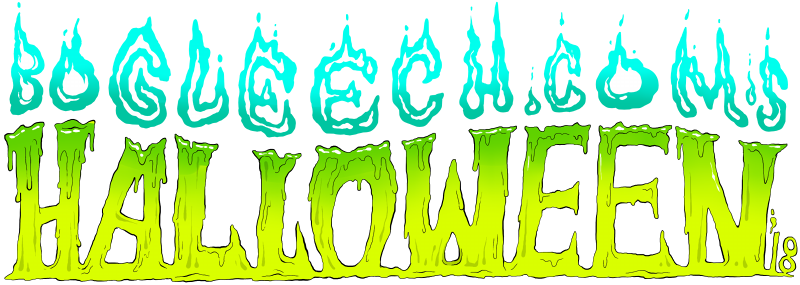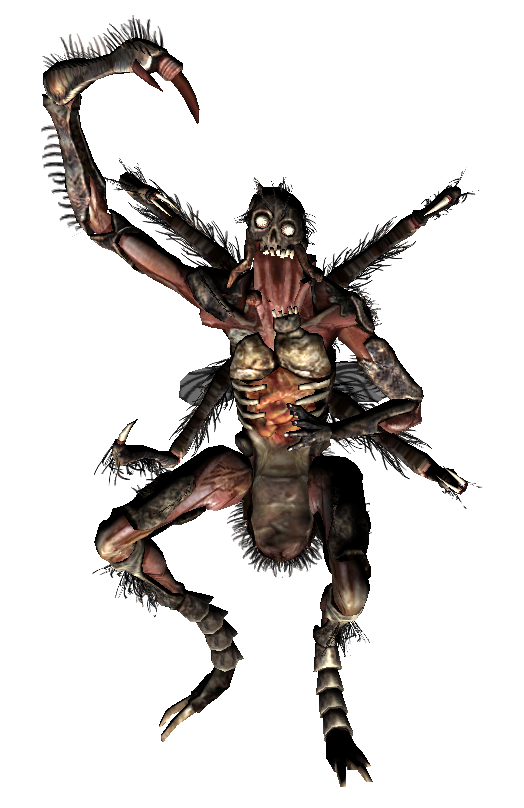Written by Jonathan Wojcik
REVISITING RESIDENT EVIL MONSTERS
Holy moly. Get a load of that trailer! It's downright adorable to look back on how small the video game industry once was compared to today. 1996 strangely doesn't feel all that long ago to me, in my personal timeline, but it's before a lot of you were ever even born, it was an era when video game violence was a hot-button media topic, games were still generally seen as "kid stuff," and computer animation was still so pricey that it was cheaper and better to just make this corny live action trailer. Every game felt like "indie" games feel to us today; something underground, maybe even a little anti-establishment, and a labor of love between small creative teams who weren't always sure what they were doing or how well it was going to work out.
Though it wasn't exactly the first "survival horror" game, Biohazard or Resident Evil went on to effectively coin the genre, and was once considered the most intense and terrifying video game ever made. So intense and so terrifying, as far as I knew, that I dared not even ask to play it as only a twelve year old child, even if I had the kind of parents who trusted me to play, watch or read basically anything I wanted. It just felt like I wasn't "supposed" to be playing video games with blood in them yet, because I was also the kind of child who refused to watch R-rated movies even if they were never, ever going to get caught. I was a complete and utter weiner for my entire childhood.
...What I'd have instead, two years later as a fourteen year old weiner, was Stephani Danelle Perry's novelization of the original game, a remarkably detailed adaptation of a fairly complete play-through that nonetheless managed to capture a lot of unique character and heart of its own. I have to reiterate here that my parents would not at all have cared that I either read this book or ever might play the game that it was based on, but for some reason, even at fourteen years old, it still felt just a little "taboo." It was, as a matter of fact, some of the most hardcore "horror" I'd ever consumed at the time as an incredibly wimpy, mild-mannered kid, and I'd do so rabidly.
I'd bought the book with my own spending money at a Barnes and Noble, and I'd taken it with me to my grandmother's house in New Jersey, not all that far from the dreaded Pine Barrens the Jersey Devil was said to call home. There was already a strange sense of eeriness whenever I stayed the night there, and that weekend was even smack in the midst of a thunderstorm. You could not have asked for a more perfect time and place to read the spookiest thing ever, convinced you were breaking some sort of rule in the process.
I'd later play Resident Evil II some months later, but I wouldn't play the first game until all the way to its Gamecube remake. For years, that cartoonishly stormy night reading a cheesy paperback would remain my only experience with the original Resident Evil.
So, I may not have experienced the game the way everybody else did, when I was most "supposed" to, but my nostalgia for its story, characters and monsters is up there with all of my most vivid and meaningful media experiences, which we're going to explore one monster at a time.

THE BASIC ZOMBIE
It feels hard to believe now, but there was a time when zombies hadn't been played straight as horror in years. They'd long been relegated to campy, children's Halloween specials, cereal commercials, and negligible Castlevania mooks; a monster nobody took seriously anymore until Resident Evil almost single-handedly dragged them back to relevance, and even popularized the concept of zombies as products of a virus.
It's a trope unbearably overplayed today, but somewhere between Resident Evil and the onslaught of 10,000 Dawn of the Dead ripoffs, the zombie was once again something terrifying, and the first time I'd play a proper Resident Evil game, they really did scare the veritable piss out of me.
I always loved this original illustration, too. The zombies we would see in-game were relatively ordinary, but the glassy grey eyeballs of this shambler bring to mind something pulled a little too quickly from the deep sea abyss. I'm going to be using almost nothing but the original, 1996 concept art for this page, even where it differs fairly drastically from the in-game models, both because it just looks plain awesome and because this artwork was once my only point of reference for monsters I encountered in the written word alone.

THE CERBERUS
If zombies scared the piss out of me way back then, it was these damn dogs that scared everything else out. I don't remember what publication it was, but I remember them ranking high in a magazine feature on the all-time scariest video game enemies. I remember the author saying something about how almost nothing else in Resident Evil triggered quite the same mental plea of "GET AWAY!!!!" as the half-eaten dogs, and it really put to words how I already felt about actual angry dogs. A creature simultaneously horrifying and infuriating for its total lack of reason and senseless, blind aggression, and that's before you also make it a rotten ghoul incapable of pain.
I HATED encountering monster dogs in games. As soon as I heard that clicking sound of their claws, I was on edge.

THE CROWS
Zombie birds are another trope we really take for granted now, but before Resident Evil, the one piece of horror that scared me the most was Alfred Hitchcock's The Birds. Some people are just incapable of taking it seriously in either book or film form, but the idea of these flying, screeching, pecking, clawing things just suddenly hating us and wanting us dead was damn near chilling when I caught it on Sci Fi Channel around nine or ten years old, and I really liked their addition to Resident Evil. Corvids are just cool wherever they show up!

THE WASPS
So Umbrella Corporation's T-virus not only turns vertebrates into the undead, but invertebrates into physics-defying giants! Wasps were an interesting choice for the first game's lone insect, too. You see a fair number of giant bees and wasps in games, but strangely, not that many in a "horror" context.

THE WEB SPINNER
So of course they had to have some giant spiders, too! You've hardly got a video game at all if you haven't got big spiders in it! Umbrella's "web spinners" are an interestingly distinct design, too. They don't recall any single, particular spider or even have the right kind of mouthparts for any arachnid in the world, but I always liked their colorful stripes, excessive number of eyes and fluffy, red ruffs. These of course scatter lots of little baby spiders when destroyed, too, and the novelization lampshades that a spider this size should collapse in on itself, implying some pretty extreme tampering by Umbrella scientists.

NEPTUNE
In-game, this mutated shark looked pretty much like a normal big shark, but the official artwork portrays a much more mutated beast with "webbed" facial skin, more reptilian eyeballs and a jaw structure closer to a big salamander than a great white. It overall looks more like some prehistoric bony fish, and I really wish that had also translated to the game. Still cool that they even included a shark in a game about a scary mansion, though. It's like they deliberately picked out animals that would call back to some of the most famous horror films.

YAWN
This is another one that looks like a plain, realistic snake in the video game, but received this beautiful artwork of a monstrously mutated serpent with colorful, warty flesh and a face that, in this case, looks a lot like various burrowing constrictor snakes, with beady little eyes and a more dome-shaped skull.
I have to say I love the name "YAWN" for a giant snake, too. It's unexpected, but it fits so well.

PLANT 42
Yep, we've even got some Little Shop of Horrors going on in here, albeit with a tad less personality and, as far as know, less musical talent. Plant 42 is still pretty interesting, with snappy feeding tentacles that hang down from a red, cyst-like pod. It really didn't occur to me until now that this is such an unusual structure for a plant, the inverse of the lower "roots" and upper "stalks" we would typically expect.

THE HUNTER
Nothing exemplifies to lovable, cheesy charm of this older artwork quite like the Hunter. For comparison, here's the later illustration that would really codify their appearance for the rest of the series:

THE TYRANT
As far as knew in the context of the original adventure, the Tyrant was the true pinnacle of Umbrella's biotechnology. The ultimate culmination of all the nefarious experiments that already tried to kill us. Usually depicted with more human like teeth and eerier, less expressive eyes, I still find the cheesier snarl of this early drawing a little more fun, even if it does feel like it's just one step too far in an already comically dramatic design.
The huge, mutated talons are pretty nasty and remind me of some exaggerated fusion between a mole's claws and a bat's wing, but what we're all really drawn to is that bizarrre, external heart dripping down off its face like some sort of breathing apparatus. I'd really never seen something like that on a monster before, and it's pretty sneaky that they didn't necessarily make that a "weak point." It's apparently an animal heart grafted to the Tyrant to assist with additional circulation during its growth, which is a pretty cool and believable explanation for something that otherwise looks like a glaring design flaw.
But while the Tyrant is the big one, it's not the final monster left in the game, and that status goes to what remains very nearly my favorite creature in the whole series.

THE CHIMERA
Though they're not of boss or even sub-boss caliber, the Chimera appear just momentarily in a single hallway near the end of the game, remnants of a "discontinued" experiment scrabbling around the walls and ceilings in the very heart of Umbrella's Spencer Mansion laboratory.
The Chimera were so named because, at the time, they were supposed to represent an ambiguous genetic hodgepodge of human and arthropod, and that original design is really something else. A hairy, spindly spider-like humanoid with no lower jaw in its face and a slobbering, circular mouth in its chest. Of course I also love those little, round, shiny spider-like eyes, and the areas of exposed muscle tissue where it doesn't have exoskeleton. The novelization rather curiously referred to them as monkeys, but I could certainly believe it from their movement behavior.

LISA TREVOR
Our final creature to review is actually the only new monster created especially for the Gamecube remaster, and really does feel like something the original game was missing - a wholly sympathetic monster. A monster whose tragic tale we learn through in-game notes, piece by piece, even as we dread our next encounter with it.
Originally the daughter of the Spencer Mansion's architect, Lisa would become one of Umbrella's first human test subjects in the late 1960's, and subsequently live in torturous conditions for over thirty more years. Having survived multiple strains of mutagenic virus and even absorbed an experimental brain parasite into her body, her humanity and grip on reality are far too shattered to be reasoned with, even as she dimly believes she's still the harmless little girl she was before she was thrust into a living hell.
Most of Lisa's details are masked by a patchwork cloak of human skin, and it may or may not have come from the same long dead parents she's still searching for. According to her own scribbled writing? She just believes she's keeping their faces "safe" until she can give them back.

From Crimson Head
It's likely we were never meant to know what was under Lisa's cloak and that it can't truly be considered canon, but remove it in the game's code, and this is what we see.
By today's standards, the original Resident Evil is almost "quaint." A game about a Mansion full of absurd puzzles, death traps and undead mutants is just par for the course by now, but in 1996 it felt like a fresh and radical new celebration of classic horror elements that popular culture had all but ceased to take seriously, complete with nods to Night of the Living Dead, Little Shop of Horrors, Tarantula, Frankenstein, The Birds, The Fly, Predator, Jaws and more. It's no wonder the original plan for the sequel game was supposed to explore supernatural themes in the same fashion, and would have pitted us against ghosts...but the "genetic engineering" theme stuck, and the idea of biological abominations created and marketed as weapons continued to escalate across more than a couple dozen major games and innumerable spinoffs, with the monsters themselves similarly escalating in both strangeness and ferocity.
It's almost surprising just how "normal" the monsters of the first game now seem in comparison, but looking at this old, awkward artwork, I can almost remember how that old house smelled in the middle of that perfectly dark and stormy night.
MORE HALLOWEEN FEATURES:
